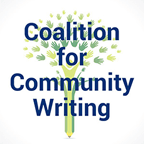Document Type
Article
Abstract
In this ethnographic study of an organic foods cooperative, I examine community through three different facets—the Voluntary Association, the Lifestyle Enclave, and the Neighborhood. I use fieldnote examples to show how each of these community facets corresponds with the three visions of discourse for social change considered by Wayne Campbell Peck, Linda Flower, and Lorraine Higgins. Peck et al.’s most powerful discouse, community literacy, corresponds to the Neighborhood facet of community. The neighborhood holds promise for developing a Biospheric Literacy as developed by Anne Mareck in the introduction to this special issue. The kinds of meanings that she says acknowledge biospherically interdependent human and non-human community members are, I suggest, ritually enacted through neighborly communication. Further, it is through the cordial talk of neighbors that we communicate the kinds of understandings needed to affect positive social change and limit damage to our biosphere.
Recommended Citation
Miller, Diane. “Neighborliness at the Co-Op: Community and Biospheric Literacy.” Community Literacy Journal, vol. 4, no. 1, 2009, pp. 31–47, doi:10.25148/clj.4.1.009452.

